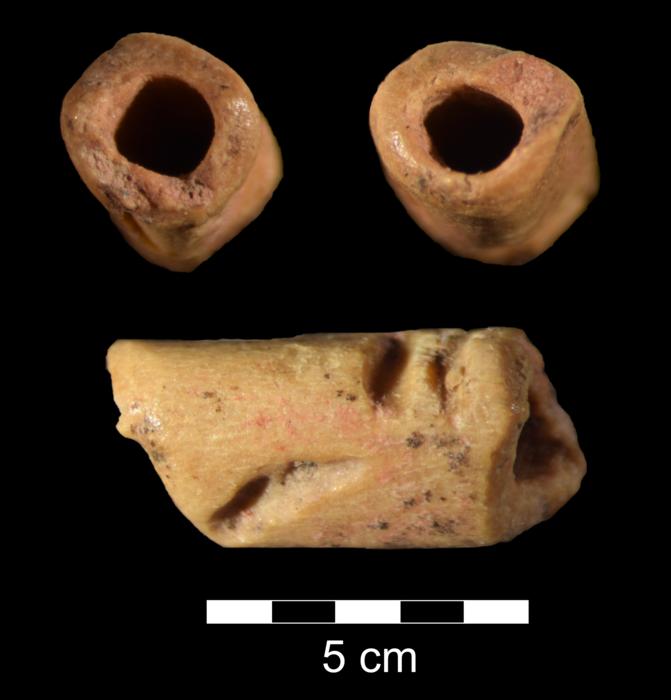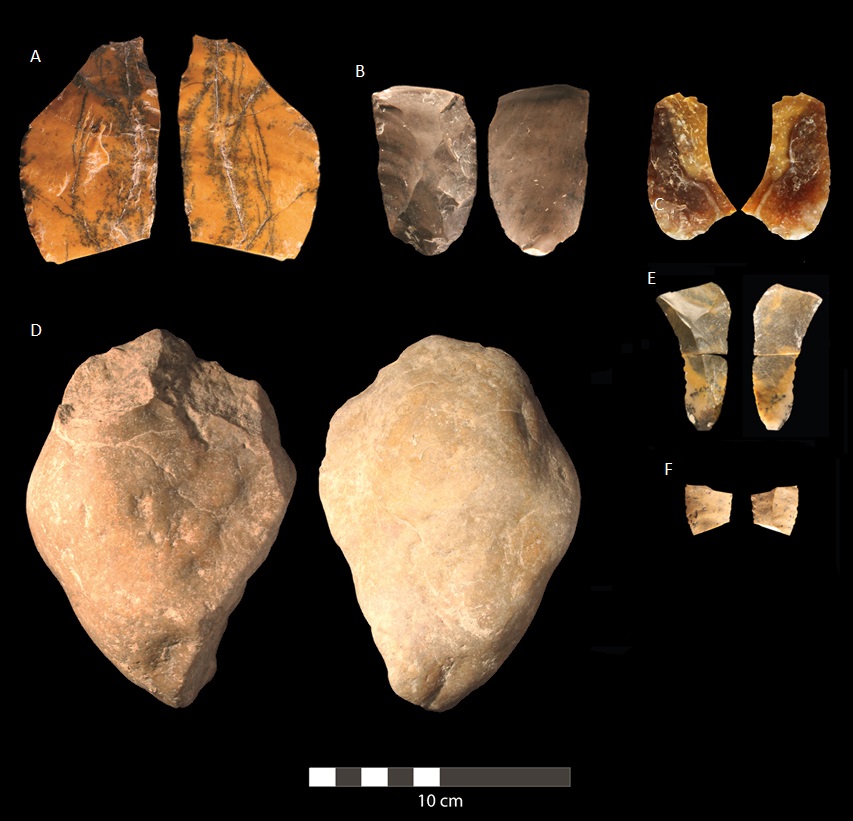Clovis Hare-Bone Bead Identified in Wyoming
Archaeologists at Wyoming’s La Prele Mammoth site, unearthed a small, tube-shaped bead dated to about 12,940 years ago and wrought from the bone of a hare—the first evidence that hares were used by the Clovis people.

LARAMIE, WYOMING—According to a statement released by the University of Wyoming, a small, tube-shaped bead unearthed at Wyoming’s La Prele Mammoth site has been dated to about 12,940 years ago by Todd Surovell of the University of Wyoming and his colleagues.

Previous studies have shown that a young mammoth was butchered at the La Prele Mammoth site; the bone bead was recovered about three feet away from a collection of other artifacts. Analysis of collagen extracted from the bead with mass spectrometry indicates that it was made from the bone of a hare, while the shape of the bone suggests it came from a hare’s paw. Marks on the outside of the bead, which was likely used to decorate clothing or was worn as jewelry, are consistent with marks made by people working with stones or their teeth, Surovell explained.
 The bead is the first evidence that hares were used by the Clovis people, who were named for the archaeological site in New Mexico where their distinctive stone tools were first unearthed, he added. Read the original scholarly article about this research in Scientific Reports. For more on archaeology at La Prele, go to “Excavating a Mammoth Hunters’ Campsite.”
The bead is the first evidence that hares were used by the Clovis people, who were named for the archaeological site in New Mexico where their distinctive stone tools were first unearthed, he added. Read the original scholarly article about this research in Scientific Reports. For more on archaeology at La Prele, go to “Excavating a Mammoth Hunters’ Campsite.”
Related Post
A shocking documentary proves that mermaids do exist
SHOCKING Revelation: Thuya, Mother of Queen Tiye, Was the Grandmother of Akhenaten and Tutankhamun—What Ancient Egyptian Secrets Did She Leave Behind?
Breaking News: Astonishing Discoveries at Karahan Tepe Confirm an Extraterrestrial Civilization is Hiding on Earth, and NO ONE Knows!
Breaking News: Researchers FINALLY Discover U.S. Navy Flight 19 After 75 Years Lost in the Bermuda Triangle!
NASA’s Secret Investigation: Uncovering the Astonishing Mystery of the UFO Crash on the Mountain!
Explosive UFO Docs LEAKED: Startling Proof That Aliens Ruled Ancient Egypt!